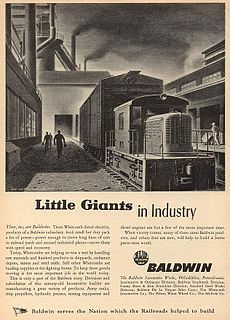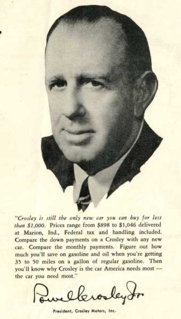Related Research Articles

Lakewood is a city in Cuyahoga County, Ohio, United States, on the southern coast of Lake Erie. Established in 1889, it is one of Cleveland's historical streetcar suburbs and part of the Greater Cleveland Metropolitan Area. The population was 52,131 at the 2010 United States Census, making it the third largest city in Cuyahoga County, behind Cleveland and Parma. Lakewood is home to a young and diverse population, including significant numbers of immigrants. Its population density is the highest of any city in Ohio and is roughly comparable to that of Washington, D.C.

Carl Burton Stokes was an American politician and diplomat of the Democratic party who served as the 51st mayor of Cleveland, Ohio. Elected on November 7, 1967, and taking office on January 1, 1968, he was the first black elected mayor of a major U.S. city.

The Cleveland metropolitan area, or Greater Cleveland as it is more commonly known, is the metropolitan area surrounding the city of Cleveland in Northeast Ohio, United States. According to 2018 United States Census estimates, the five-county Cleveland–Elyria Metropolitan Statistical Area (MSA) consists of Cuyahoga County, Geauga County, Lake County, Lorain County, and Medina County, and has a population of 2,057,009 making Greater Cleveland the 33rd most populous metropolitan area in the United States, the third largest metro area in Ohio, and the second largest metro area, behind Columbus, entirely in Ohio. Greater Cleveland is part of the larger Cleveland–Akron–Canton Combined Statistical Area and the Great Lakes Megalopolis.
Carl Strandlund was a Swedish-born American inventor and entrepreneur.

The Brass Era is an American term for the early period of automotive manufacturing, named for the prominent brass fittings used during this time for such things as lights and radiators. It is generally considered to encompass 1896 through 1915, a time when these vehicles were often referred to as horseless carriages.

The Geo D. Whitcomb Company was founded by George Dexter Whitcomb (1834–1914), of Chicago, Illinois, who started a modest machine shop in 1878, and began the manufacture of coal mining machinery, laying the foundation for the concern that became known as The Whitcomb Locomotive Company.

Powel Crosley Jr. was an American inventor, industrialist, and entrepreneur. He was also a pioneer in radio broadcasting, and a former owner of the Cincinnati Reds major league baseball team. In addition, Crosley's companies manufactured Crosley automobiles and radios, and operated WLW radio station. Crosley, once dubbed "The Henry Ford of Radio," was inducted into the Automotive Hall of Fame in 2010 and the National Radio Hall of Fame in 2013.

Charles Francis Brush was an American engineer, inventor, entrepreneur, and philanthropist.

John William Lambert was an American automotive pioneer, inventor, automobile manufacturer, and the inventor of the first American gasoline automobile.
The National Carbon Company was founded in 1886 by the former Brush Electric Company executive W. H. Lawrence, in association with Myron T. Herrick, James Parmelee, and Webb Hayes, son of U.S. President Rutherford B. Hayes, in Cleveland, Ohio. In 1890, National Carbon merged with Thomson-Houston, Standard Carbon, and Faraday Carbon.

Clifford Allen Lewis was a professional American football player for the Cleveland Browns of the All-America Football Conference and National Football League. He was the team's first quarterback.
Lloyd E. Yoder, nicknamed The Plaid Bull, was an American football player. He played collegiately at Carnegie Tech, and was elected to the College Football Hall of Fame in 1982.

Arthur Lovett Garford was a noted industrialist, inventor, and politician. Today, Garford's home serves as the Hickories Museum and home of the Lorain County Historical Society.
William Wallace Armstrong was an American journalist and politician born in Columbiana County, Ohio. He served as a Democratic Ohio Secretary of State from 1863-1865 and was later publisher of The Plain Dealer and postmaster of Cleveland.
Henry Darling Coffinberry was a prominent American industrialist from Cleveland, Ohio. Along with his partner, Robert Wallace, H. D. Coffinberry is considered one of the founding fathers of modern Great Lakes shipping. Following a memorable Civil War career on the ironclad gunboat Louisville, Coffinberry returned to civilian life in Cleveland, Ohio. There he met Robert Wallace and together they built the first iron and steel hulled freighters to be used on the Great Lakes.
The Rauch & Lang Carriage Company was an American electric automobile manufactured in Cleveland, Ohio, from 1905 to 1920 and Chicopee Falls, Massachusetts, from 1920-1932.

George Durkin Corneal was an American basketball, track and football coach. In 1909, he became the first basketball coach at the University of Michigan and led the Michigan Wolverines basketball team to a 1-4 record. He also coached football, track, and basketball at the University of Wisconsin–Stevens Point and Lakewood High School.

Carl Victor Weygandt was a jurist in the U.S. State of Ohio. He was Chief Justice of the Ohio Supreme Court for thirty years.

The E. W. Bliss Company is a manufacturer of machine tools founded by Eliphalet Williams Bliss. The company was based in Brooklyn, New York and is now based in Hastings, Michigan as BCN Technical Services.
Robert McFarland Gates was an American mechanical and consulting engineer, and business executive, who served as 63th president of the American Society of Mechanical Engineers in the year 1944-45.